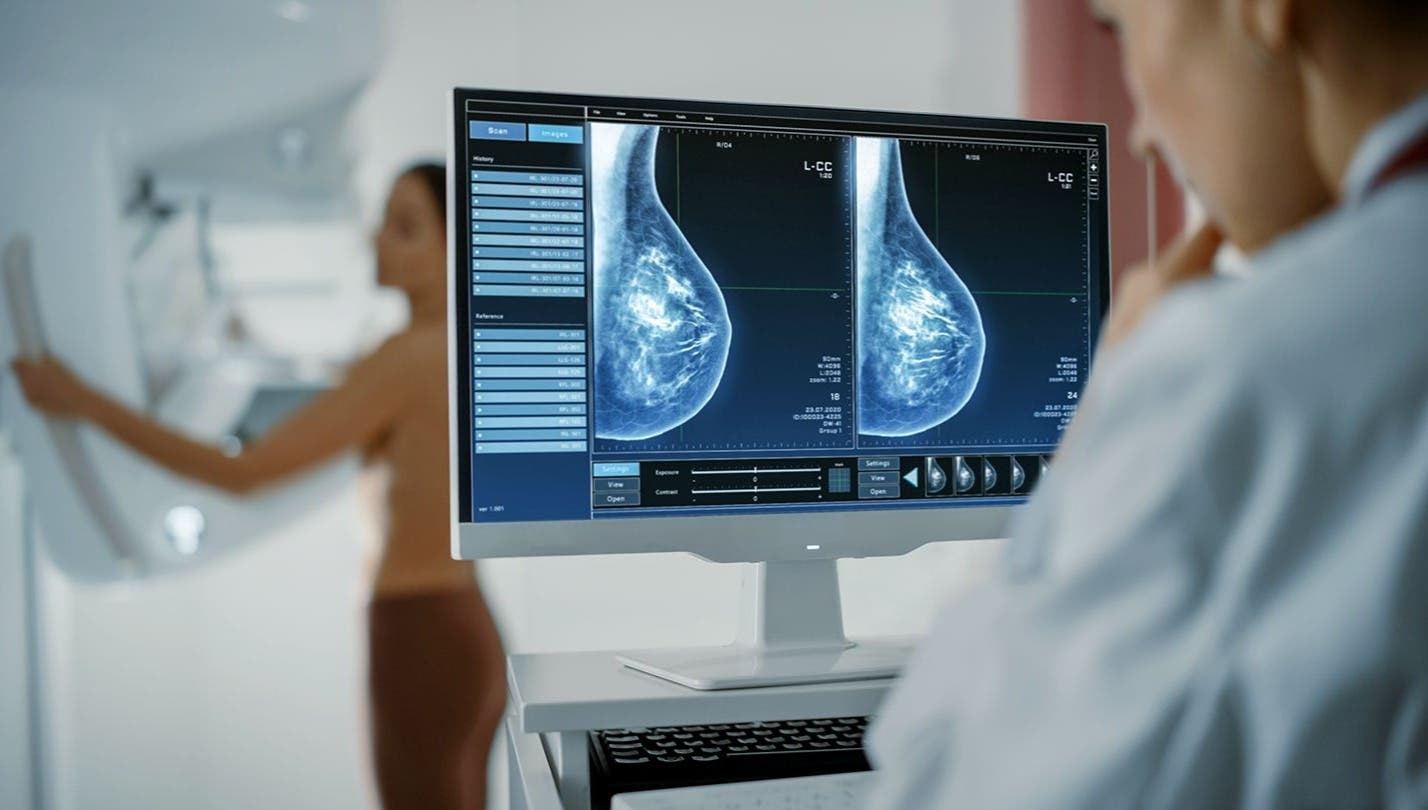Cancer cells can be reverted back to normal, study finds
One characteristic of cancer cells is their high adaptability to different environments in the body and to drug treatments.

[Sept. 9, 2023: Angelika Jacobs, University of Basel]
To find new ways to treat triple-negative breast cancer, researchers have differentiated cancer cells to convert them into less harmful cells that no longer divide. (CREDIT: Creative Commons)
Cancer occurs when cells grow uncontrollably and spread to other organs in the body. Cancer cells differ from normal cells in many ways. One characteristic of cancer cells is their high adaptability to different environments in the body and to drug treatments. In this characteristic, they resemble stem cells or cells in an early stage of maturation.
Researchers at the University of Basel and the University Hospital Basel have tested the possibility of artificially maturing (or more precisely, differentiating) breast cancer cells as an approach to turn them into a more normal type of cell.
Differentiation is a therapeutic strategy that has been successfully implemented in treating blood-borne cancers but not yet in solid tumors. In the journal Oncogene, a research group lead by Professor Mohamed Bentires-Alj now reports promising new results. The researchers were able to use differentiation to treat an especially aggressive type of carcinoma called triple negative breast cancer.
“We show here that we can convert breast cancer cells to less harmful cells that stop growing,” says Bentires-Alj who is a group leader at the Department of Biomedicine.
Related Stories:
The dual activity of the estrogen receptor
The hormone estrogen acts as a signaling molecule in cells by binding to its cognate receptor, the estrogen receptor, thereby inducing a range of biological effects. In the normal breast, cells that express the estrogen receptor are mature specialized breast cells and do not proliferate.
In contrast, in a fraction of breast cancers cells that express the estrogen receptor proliferate significantly. These breast cancers are called estrogen receptor-positive breast cancers and comprise about 75% of all breast cancer cases. Because they are susceptible to estrogen, they can be treated with anti-estrogenic therapies, which are highly effective in patients.
The triple-negative breast cancer subtype however, is not susceptible to estrogens or anti-estrogens. This type of carcinoma occurs mainly in pre-menopausal women and often lacks effective treatment options.
“Our initial idea was to induce estrogen receptor expression in order to convert triple-negative breast cancer into estrogen-receptor positive breast cancer because of more effective treatment options available for this subtype,” says the study’s lead author Dr. Milica Vulin.
In collaboration with Novartis, the research team tested more than 9500 compounds for their efficacy in reaching this goal. They found that the compounds showing the most promising results were inhibitors of an essential cell cycle protein called polo-like kinase 1 (PLK1).
Inhibiting this protein resulted in the desired increased expression of the estrogen receptor. To the researchers’ surprise, this did not just convert the triple-negative breast cancer cells to a more manageable type of cancer cells. It converted them to cells that are similar to normal cells.
Implications for treatment
“Understanding the cellular and molecular mechanisms that define cancer and how these mechanisms differ from normal cells is crucial for developing new innovative therapies,” says Bentires-Alj. The results open a new avenue for treating triple-negative breast cancer. “The compounds used in this study are already in clinical trials to treat other cancer types, including blood-borne, lung, and pancreatic cancer,” the researcher continues. This underlines the possibility of testing these compounds in clinics and in treating breast cancer.
To find new ways to treat triple-negative breast cancer, researchers have differentiated cancer cells to convert them into less harmful cells that no longer divide. (CREDIT: iStock)
Especially in the era of immunotherapies, it has been suggested that “normal-like” cells can be cleared by the immune system while “cancerous” cells evade killing by immune cells.
In the future, it remains to be determined if differentiation therapy can be combined with immunotherapies. “We are pursuing such strategies, and only time and resources are in our way to make further progress,” the researchers conclude.
Types of Breast Cancer
Angiosarcoma
Ductal carcinoma in situ (DCIS)
Inflammatory breast cancer
Invasive lobular carcinoma
Lobular carcinoma in situ (LCIS)
Male breast cancer
Paget's disease of the breast
Recurrent breast cancer
Symptoms of Breast Cancer
Signs and symptoms of breast cancer may include:
A breast lump or thickening that feels different from the surrounding tissue
Change in the size, shape or appearance of a breast
Changes to the skin over the breast, such as dimpling
A newly inverted nipple
Peeling, scaling, crusting or flaking of the pigmented area of skin surrounding the nipple (areola) or breast skin
Redness or pitting of the skin over your breast, like the skin of an orange
When to see a doctor
If you find a lump or other change in your breast — even if a recent mammogram was normal — make an appointment with your doctor for prompt evaluation.
Note: Materials provided above by University of Basel. Content may be edited for style and length.
Like these kind of feel good stories? Get the Brighter Side of News' newsletter.
Joseph Shavit
Head Science News Writer | Communicating Innovation & Discovery
Based in Los Angeles, Joseph Shavit is an accomplished science journalist, head science news writer and co-founder at The Brighter Side of News, where he translates cutting-edge discoveries into compelling stories for a broad audience. With a strong background spanning science, business, product management, media leadership, and entrepreneurship, Joseph brings a unique perspective to science communication. His expertise allows him to uncover the intersection of technological advancements and market potential, shedding light on how groundbreaking research evolves into transformative products and industries.



